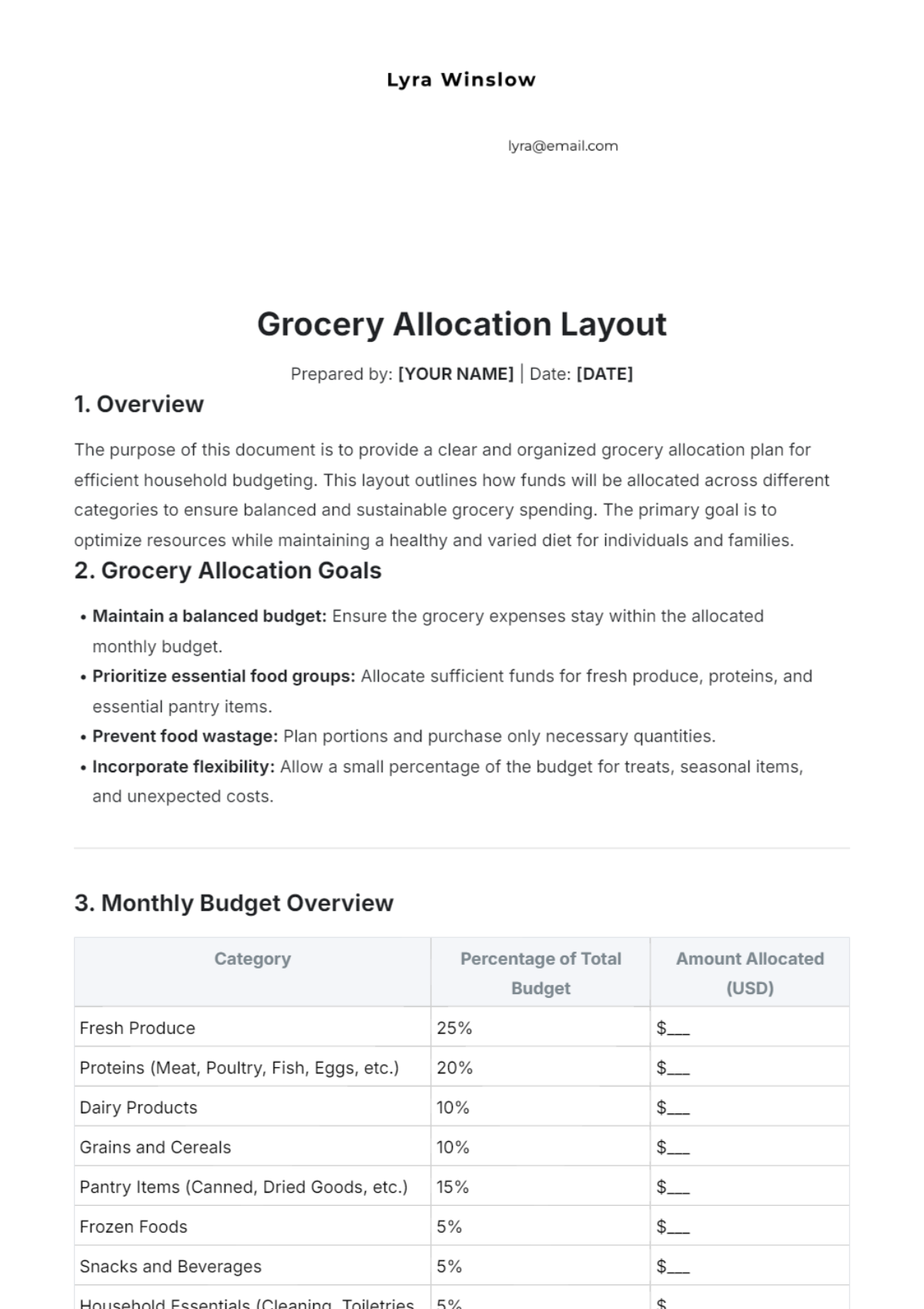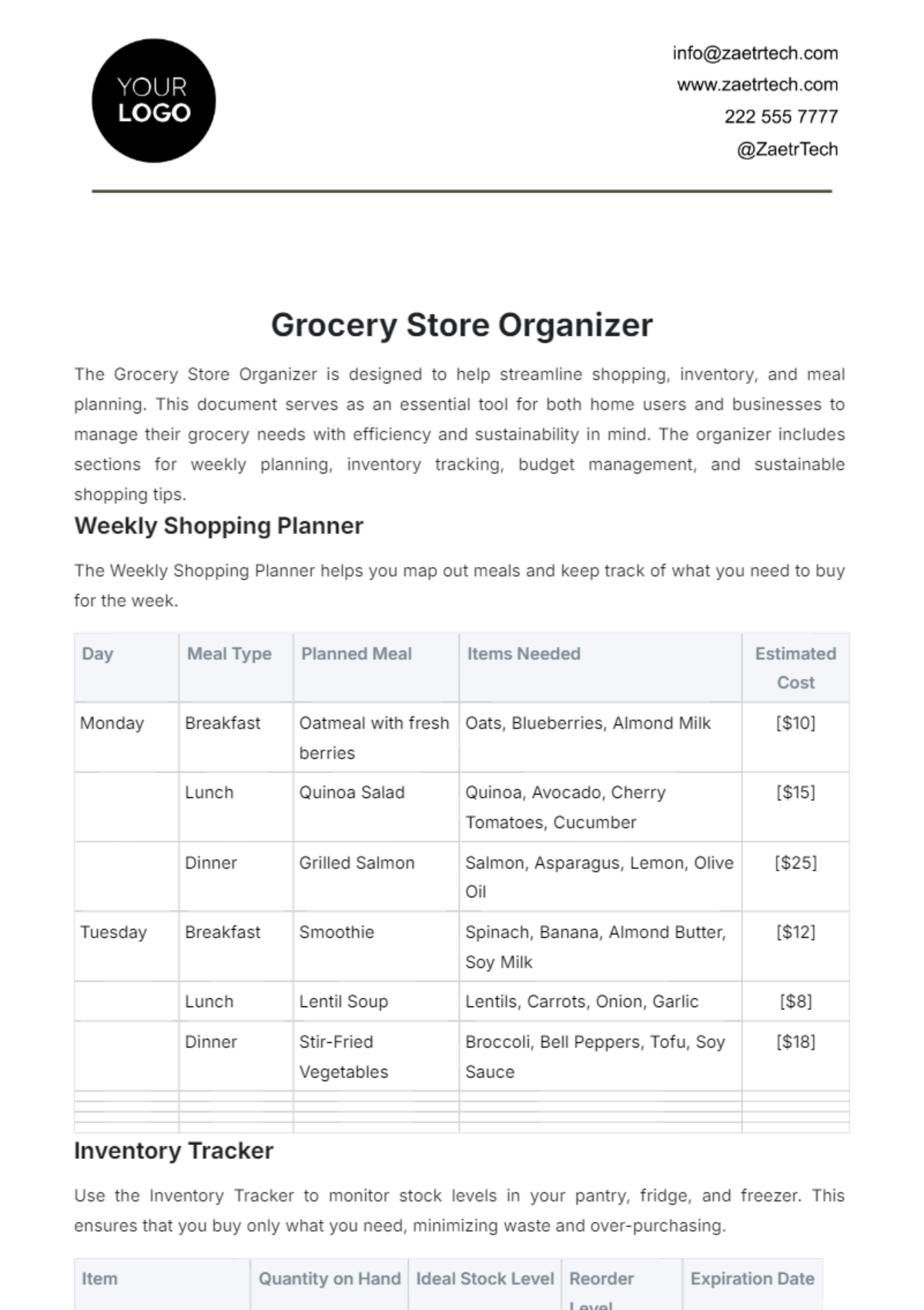Grocery Store Food Handling Guideline Outline
I. Introduction
Purpose of the Guidelines: (Define the aim of the guidelines to ensure food safety and public health.)
Importance of Food Safety in Grocery Stores: (Discuss the role of grocery stores in preventing foodborne illnesses.)
Overview of Key Food Safety Principles: (Briefly introduce core concepts like HACCP (Hazard Analysis Critical Control Point) and GMP (Good Manufacturing Practices).)
II. Personal Hygiene
Handwashing Protocols: (Detail when and how to wash hands, including the use of soap, warm water, and proper hand drying techniques.)
Personal Cleanliness and Grooming Standards: (Include rules for uniforms, hair restraints (hats, hairnets), and personal hygiene items like nail trimming and jewelry restrictions.)
Guidelines for Illness and Reporting Symptoms: (Provide instructions for staff on when to report symptoms of illness, including gastrointestinal symptoms, and policies for exclusion and return to work.)
III. Receiving and Storage
Procedures for Receiving Food Deliveries: (Outline the steps for inspecting deliveries for quality, temperature, and signs of contamination or spoilage.)
Temperature Control for Perishable Items: (Specify temperature ranges for different types of perishable goods, like dairy, meat, seafood, and produce, including the use of thermometers.)
Proper Storage Techniques
FIFO Method (First In, First Out): Explain the importance of rotating stock to use older items first.
Labeling and Dating: Instructions on how to properly label and date items for traceability and shelf-life management.
Segregation of Raw and Ready-to-Eat Foods: Guidelines for preventing cross-contamination in storage areas.
IV. Food Preparation
Cleaning and Sanitizing Work Surfaces and Equipment: (Detailed cleaning schedules and procedures, including the types of cleaning agents and sanitizers to use.)
Avoiding Cross-Contamination: (Techniques such as using separate cutting boards and utensils for raw and cooked foods, and proper handwashing between tasks.)
Safe Food Handling Practices
Cooking Temperatures: (Minimum internal temperatures for different types of food (e.g., poultry, beef, seafood).)
Thawing Methods: (Safe methods for thawing food, such as in the refrigerator, under cold running water, or in the microwave if cooked immediately.)
V. Display and Serving
Maintaining Food Display Areas: Protocols for keeping display cases clean and at the proper temperature.
Temperature Control for Hot and Cold Foods: Standards for maintaining hot foods at 135°F (57°C) or above and cold foods at 41°F (5°C) or below.
Safe Practices for Serving Ready-to-Eat Foods: Hygiene practices for employees handling ready-to-eat foods, including the use of gloves and utensils.
VI. Cleaning and Sanitizing
Daily and Periodic Cleaning Schedules: (Comprehensive schedules for routine cleaning tasks and deeper periodic cleaning.)
Proper Use of Cleaning and Sanitizing Agents: (Instructions on dilution, application, and contact time for various cleaning agents.)
Maintenance of Cleaning Equipment: (Guidelines for the proper care and storage of cleaning tools and equipment.)
VII. Pest Control
Procedures for Preventing Pest Infestations: (Strategies such as keeping doors closed, using air curtains, and regular inspections.)
Monitoring and Control Measures: (Use of traps, monitoring devices, and professional pest control services.)
Reporting and Addressing Pest Issues: (Steps for staff to report sightings and actions to take when pests are detected.)
VIII. Training and Compliance
Staff Training Programs on Food Safety: (Regular training sessions covering all aspects of the guidelines, with records of attendance.)
Regular Review and Updates of Guidelines: (Procedures for periodically reviewing and updating the guidelines to reflect new regulations or best practices.)
Compliance with Local, State, and Federal Food Safety Regulations: (Ensuring that all practices align with laws and regulations, including regular audits and inspections.)
























